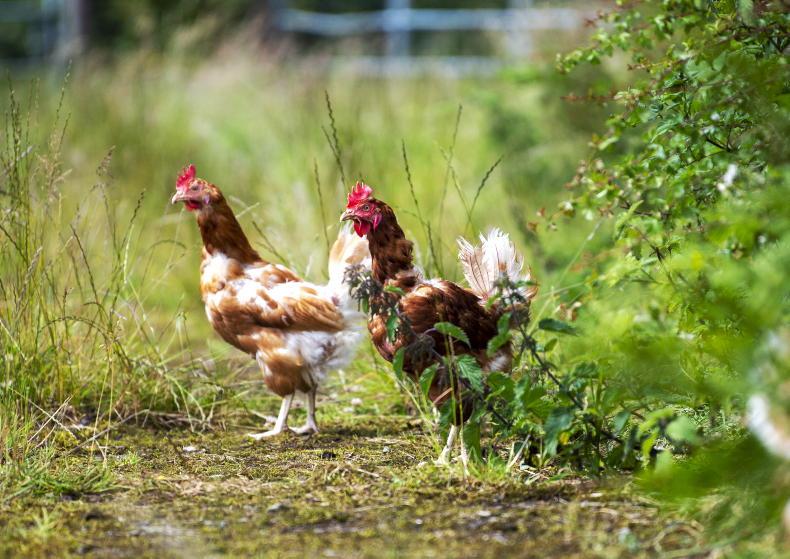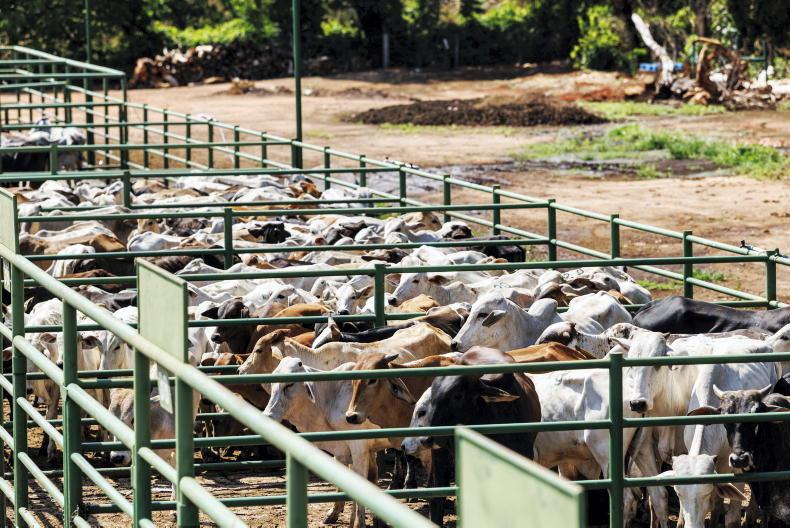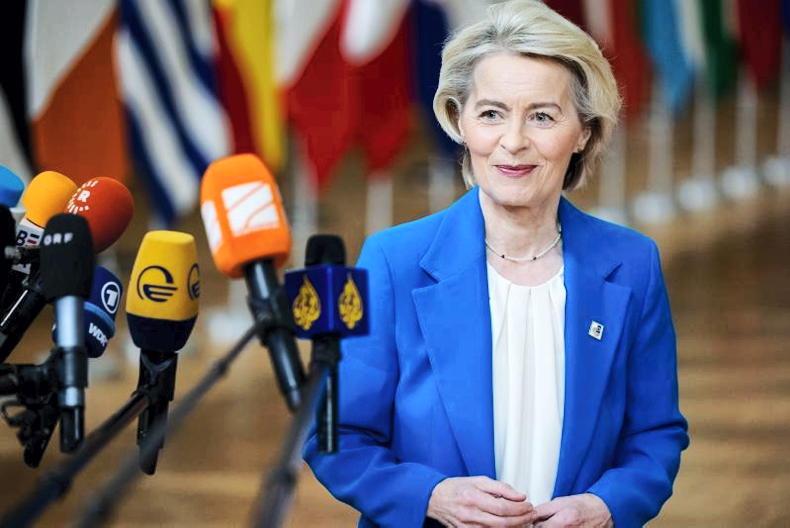The decision by Government on the level of emissions reductions that has to be delivered by farmers between now and 2030 will decide the shape of Irish agriculture for the remainder of this decade and beyond.
This is how it has been historically and how it will continue to be into the future.
Prior to joining the EEC, Irish agriculture seriously under-delivered on its potential, because there was no practical market beyond the UK.
This changed with joining the then-EEC, when tariff-free markets opened in western Europe.
The early years of EEC membership were all about expanding production, which meant incentives for draining marginal land, removing hedges to increase machine efficiency and production expanded.
By the mid-1980s, there was a surplus of many commodities and milk quotas were introduced, controlling production.
With this policy decision, farmers switched to beef production, which was free from quota restriction.
When quotas were removed in 2015, farmers quickly expanded to make up for lost time, hence the explosion in dairy production and processing in recent years.
Cross roads
Now, almost half a century on from joining the EEC, later becoming the EU, Irish farmers find themselves at another crossroads.
Rather than production, policy is now about land management and reduction of emissions caused by production.
It may be illogical to curb livestock production where there is abundant grass and water in pursuit of an arbitrary manufactured national target, but that isn’t the point.
Farmers will adapt to what is required from policy by following the money trail of incentives wherever that may lead.
This week, the Irish Farmers Journal reported on the incentives for farmers to switch to organic, including a lump sum payment.
This will be an attractive proposition for many farmers, especially in the suckler and beef sector, where margins are wafer thin.
Organic production has never taken off in Ireland and currently accounts for around 2% of farmland, among the lower in EU countries, where the highest is 25% in Austria.

Organic farming often features more mixed enterprises. \ Ciara Wilkinson
The reason why organic production has been such a small part of Irish farming is simply because the market didn’t return a sufficient premium to offset the lower output from organic systems.
If it had, organic production would have already expanded to meet that market demand.
Build it and they will come
If markets are the pull factor in production, the push is what happens at the other end and a significant incentive scheme certainly qualifies as a major push.
If enough support money is provided, farmers will respond and production will increase accordingly. The Irish target for organic output in the next CAP is to achieve an almost fourfold increase to 7.5% of land in organic farming by 2027.
If this is to happen, it will have to be incentive-led, as there has been no evidence of market demand to deliver this level of growth.
Of course, there is a variation of the 'build it and they will come' philosophy with current Government and EU policy.
If organic produce is available on supermarket shelves and butcher shops, consumers at home and abroad will buy it. However, the likelihood is that if there is abundant supply, they will pay little if any premium for the product.
It was striking to note that in the Irish Farmers Journal recently, an organic farm in Co Roscommon was selling its produce into conventional markets.
The law of unintended consequences
If this is happening at the present level of output, it is difficult to envisage a premium market growing for a fourfold increase in supply over the next few years.
Yet, with plenty of organic product available and at a comparable price, there is likely to be demand and a preference over conventional production.
Could that in turn lead to organic product being the preferred choice of consumers, but only at the same price as conventional product?
Could that in turn mean a decline in market opportunity in favour of organic production and in time organic output becoming the base standard on Irish farms with non-organic being downgraded unintentionally?
Throughout its history, the CAP has had to take corrective measures because policy overachieved.
Production that was so essential in the beginning had to be curtailed and it is now reversing the policy of the past by supporting farmers to rewet land that had previously been drained with financial support.
The current big idea is to drive organic production through support, with no indication of premium markets being available to support this expansion.
Short-term policy making will deliver short-term results, but these aren’t necessarily in the best long-term interests of farmers.
Also, it won't matter in a global context if Irish production is reduced - there are plenty of countries outside the EU that will take up the slack in supplying the additional demand that is coming from global markets, even if their emissions per kilo or litre are higher.
The decision by Government on the level of emissions reductions that has to be delivered by farmers between now and 2030 will decide the shape of Irish agriculture for the remainder of this decade and beyond.
This is how it has been historically and how it will continue to be into the future.
Prior to joining the EEC, Irish agriculture seriously under-delivered on its potential, because there was no practical market beyond the UK.
This changed with joining the then-EEC, when tariff-free markets opened in western Europe.
The early years of EEC membership were all about expanding production, which meant incentives for draining marginal land, removing hedges to increase machine efficiency and production expanded.
By the mid-1980s, there was a surplus of many commodities and milk quotas were introduced, controlling production.
With this policy decision, farmers switched to beef production, which was free from quota restriction.
When quotas were removed in 2015, farmers quickly expanded to make up for lost time, hence the explosion in dairy production and processing in recent years.
Cross roads
Now, almost half a century on from joining the EEC, later becoming the EU, Irish farmers find themselves at another crossroads.
Rather than production, policy is now about land management and reduction of emissions caused by production.
It may be illogical to curb livestock production where there is abundant grass and water in pursuit of an arbitrary manufactured national target, but that isn’t the point.
Farmers will adapt to what is required from policy by following the money trail of incentives wherever that may lead.
This week, the Irish Farmers Journal reported on the incentives for farmers to switch to organic, including a lump sum payment.
This will be an attractive proposition for many farmers, especially in the suckler and beef sector, where margins are wafer thin.
Organic production has never taken off in Ireland and currently accounts for around 2% of farmland, among the lower in EU countries, where the highest is 25% in Austria.

Organic farming often features more mixed enterprises. \ Ciara Wilkinson
The reason why organic production has been such a small part of Irish farming is simply because the market didn’t return a sufficient premium to offset the lower output from organic systems.
If it had, organic production would have already expanded to meet that market demand.
Build it and they will come
If markets are the pull factor in production, the push is what happens at the other end and a significant incentive scheme certainly qualifies as a major push.
If enough support money is provided, farmers will respond and production will increase accordingly. The Irish target for organic output in the next CAP is to achieve an almost fourfold increase to 7.5% of land in organic farming by 2027.
If this is to happen, it will have to be incentive-led, as there has been no evidence of market demand to deliver this level of growth.
Of course, there is a variation of the 'build it and they will come' philosophy with current Government and EU policy.
If organic produce is available on supermarket shelves and butcher shops, consumers at home and abroad will buy it. However, the likelihood is that if there is abundant supply, they will pay little if any premium for the product.
It was striking to note that in the Irish Farmers Journal recently, an organic farm in Co Roscommon was selling its produce into conventional markets.
The law of unintended consequences
If this is happening at the present level of output, it is difficult to envisage a premium market growing for a fourfold increase in supply over the next few years.
Yet, with plenty of organic product available and at a comparable price, there is likely to be demand and a preference over conventional production.
Could that in turn lead to organic product being the preferred choice of consumers, but only at the same price as conventional product?
Could that in turn mean a decline in market opportunity in favour of organic production and in time organic output becoming the base standard on Irish farms with non-organic being downgraded unintentionally?
Throughout its history, the CAP has had to take corrective measures because policy overachieved.
Production that was so essential in the beginning had to be curtailed and it is now reversing the policy of the past by supporting farmers to rewet land that had previously been drained with financial support.
The current big idea is to drive organic production through support, with no indication of premium markets being available to support this expansion.
Short-term policy making will deliver short-term results, but these aren’t necessarily in the best long-term interests of farmers.
Also, it won't matter in a global context if Irish production is reduced - there are plenty of countries outside the EU that will take up the slack in supplying the additional demand that is coming from global markets, even if their emissions per kilo or litre are higher.











SHARING OPTIONS